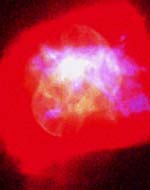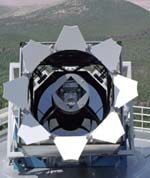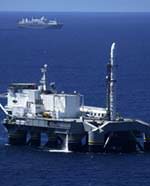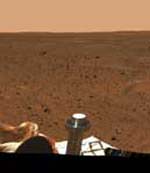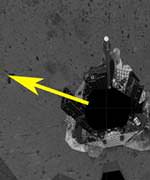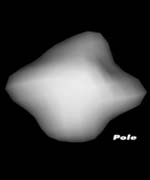
Image credit: ESA
The European Space Agency’s comet chasing spacecraft, Rosetta, is being prepared for its trip into space? again. After a series of technical problems and missed opportunities, the spacecraft is now being targeted to chase down Comet 67P/Churyumov-Gerasimenko; it will reach the comet and go into orbit in August 2014. The spacecraft will map the surface of the comet in great detail and then actually land on the surface and provide high resolution images from the “ground”.
ESA?s comet chaser will soon be heading towards a new target, known as 67P/Churyumov-Gerasimenko, but the mission team is confident that a rich scientific bonanza awaits when Rosetta arrives at its destination in the summer of 2014.
One year ago, scientists around the world were eagerly awaiting the start of Rosetta?s historic voyage to orbit and land on a small comet called 46P/Wirtanen. Then, following a mishap with an Ariane 5 launch vehicle, the spacecraft?s odyssey was put on hold and mission planners began to search for other comets that would be within Rosetta?s range.
Following careful analysis of the available objects and associated launch constraints for each option, the ESA Science Programme Committee eventually accepted the recommendation to send Rosetta to another periodic intruder into the inner Solar System, comet Churyumov-Gerasimenko.
Under the revised flight plan, the hardy spacecraft will now make one flyby of Mars and three flybys of Earth en route to the comet. This circuitous trek will enable Rosetta to make two excursions into the main asteroid belt before its rendezvous with the fast-moving cosmic iceberg.
At present, the amount of science that can be conducted during the 10-year trek to comet Churyumov-Gerasimenko remains uncertain. Some scientific observations of the Red Planet will be possible during the Mars encounter, and there is likely to be at least one opportunity to study a main belt asteroid at close quarters. A number of possible candidates have already been identified, but the final selection will be made after launch, once the mission team has determined how much surplus fuel is available on the spacecraft.
However, the most exciting phase of Rosetta?s 11-year odyssey will come when it brakes into orbit around Churyumov-Gerasimenko in August 2014. From an altitude of just a few kilometres, its cameras will be able to map the entire pockmarked surface of the icy nucleus at high resolution and search for suitable landing sites.
Once the surface of the comet?s nucleus has been surveyed in unprecedented detail and a safe landing site has been selected, the Rosetta lander will separate from the orbiter and slowly descend to the pristine surface. If all goes according to plan, the lander will anchor itself to the icy crust and begin a detailed survey of its surroundings.
Over a period of several weeks, a treasure trove of data from the nine instruments on the lander will be sent back to Earth via the Rosetta orbiter. During its historic foray, the lander will return close-up pictures of the comet?s nucleus, drill into the dark organic crust, and sample the primordial ices and gases. Even the internal structure of the dirty snowball will be probed as radio signals from the orbiter pass through the nucleus to the lander and back again. For the scientists, this ?ground truth? data will provide invaluable validation of the remote observations sent back by the orbiter as its skims over the undulating surface of the small ice world.
Meanwhile, the orbiter will continue to monitor the dramatic changes in the nucleus that take place during its headlong plunge towards the inner Solar System. Over a period of about 18 months, the 11 experiments on the Rosetta orbiter will examine every aspect of the comet?s behaviour during its headlong plunge towards the inner Solar System.
Since Churyumov-Gerasimenko typically becomes much more active than Wirtanen as it approaches the Sun, scientists expect to observe at close quarters for the first time the remarkable transformation of a comet from a tranquil iceberg into a world of turmoil. In particular, as its ices sublimate, bright jets will appear, ejecting gas and dust into space to create a coma and a distinctive tail that stretches vast distances in the anti-sunward direction.
Despite its generally more active nature, the dust environment close to the comet is probably little more hazardous for the spacecraft than it would be in the vicinity of comet Wirtanen. Churyumov-Gerasimenko?s larger perihelion distance means that its nucleus is heated less strongly by the Sun, so limiting the output of gas-laden dust that could threaten the orbiter.
According to ESA?s Rosetta project scientist, Gerhard Schwehm, it should be an exciting time for everyone concerned.
?Ground observations have shown that the comet becomes active at around 3 AU (about 450 million km from the Sun),? he said. ?We see a lot of jets and surface activity with considerable structure in the coma.?
?Since Churyumov-Gerasimenko has only made a few passes through the inner Solar System, it is still a fairly fresh, active comet, which produces a lot of gas and dust. By flying alongside it for more than a year, we shall be able to observe the dramatic transformation that takes place as it is warmed by the Sun. It will also be intriguing to see how the activity dies down after it passes perihelion and begins the outward leg of its orbit.?
?Working in unison, the lander and the orbiter will revolutionise our understanding of comets,? said Schwehm. ?They will lead to amazing discoveries about the most primitive building blocks of the Solar System.?
In particular, the enormous flood of data returned during Rosetta?s remarkable voyage will provide new insights into such fundamental mysteries as the formation of Earth?s oceans and the origin of life.
It may even help the human race to survive in the long term. By transforming our understanding of the Solar System?s icy wanderers, Rosetta will give us vital insights about how to respond should we find a comet on a collision course with the Earth.
Rosetta?s unique odyssey of exploration will terminate in December 2015, six months after the comet passes perihelion and begins its retreat to the more frigid regions of Jupiter?s realm. After a dramatic saga lasting almost 12 years, the curtain will fall on the most ambitious scientific mission ever launched by Europe.
But, for the scientists, the work will only just be beginning.
Original Source: ESA News Release

